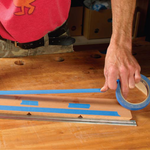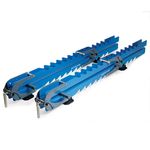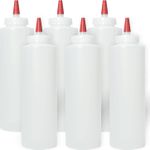From The Bench: The glue that binds us
When retired Anglican priest Donald Lawton thinks about his wife Norma's support of his woodworking passion over the years, this sticky story comes to mind.
My calling was as an Anglican (Episcopalian) priest. My career in ministry took me from missionary priest in the Yukon, military chaplain on static bases and on operational deployments at sea, to parish assignments in several dioceses in Canada and the UK. I trained and worked as a counselor and taught theology, liturgics, and pastoral skills to lay ministers. I have had an adventuresome and fulfilling 45 years as a priest. But I’ve also been a woodworker since I was a boy—I’ve made some 40 pieces of furniture for our home and numerous others for fundraisers—and through it all, my heart place has been my workshop. It is my island of quiet, the place where I had some of my deep communication with God, and with my son, and where I experienced great support and love from my wife.
My wife’s father worked as a carpenter for part of his life, and she grew up helping him. She has always supported me, working alongside me, buying me tools, magazines, and books, and putting up with half-finished projects that haven’t worked out. As I think about how to illustrate her role in my woodworking, one story comes to mind.
We needed a new screen insert for the storm door to our porch. My wife liked one in a magazine photo that had an oval frame set inside the rectangular outer frame. The oval in the photo was fairly delicate and looked to be steam-bent. But steam-bending was beyond me at that time. I tried cutting out an oval with my scroll saw, but with so much short grain, it just wasn’t destined to hold together. Steam-bending certainly did seem like the solution. But I was not into steam-bending. There had to be another way.
Then I saw an article on bent lamination. This would solve the problem. After making an oval bending form and cutting a stack of 1/8-in.-thick strips from a straight-grained piece of clear pine, I piled up all the clamps I had and started spreading glue on one strip. I laid another strip on it and proceeded to clamp it around the form. I spread glue on the next strip and laid it around the first two, taking off one clamp at a time and then replacing it with the third strip in place. As I approached the full oval, I found I needed to remove two clamps to make the bend. Even high tack, exterior-grade glue is slippery under bending tension. Loosening the second clamp was my undoing. Suddenly everything went “spoing” and I was slapped in the beard by a gluey-wet strip of pine. When I tried to put it back where it belonged, another piece went “spoing” and a gluey wet strip slapped against my workshop overalls. Then suddenly everything was loose, and I was in a sticky mess. In desperation I called for my wife. She came. She looked. She left.
Fortunately, she returned with her gardening shirt on and with a basin of water and a wet cloth. The two of us were gradually able to get eight layers of glue-covered strips clamped around the oval form. It required all my appropriately sized clamps, plus some of my shorter bar clamps, plus a number of screwed blocks and wedges. We surveyed the finished oval. I hoped it would stay together. I measured to see if it would fit. Adjustments would be needed.
We looked at each other. I had glue in my beard and smeared across my face, not to mention smeared all over my overalls. My wife had a new hair style, rigid and spiky. Her gardening shirt had definitely been a good idea. Then she uttered those words every woodworker wants to hear: “It seems to me that you should buy some more clamps.”
The Rev. Canon Donald J. Lawton is an active woodworker and a retired Anglican priest living in Squamish, B.C., Canada with Norma, his wife of 50 years.
Fine Woodworking Recommended Products

3M Blue Tape

Rockler Deluxe Panel Clamp

Glue Bottle
























Log in or create an account to post a comment.
Sign up Log in